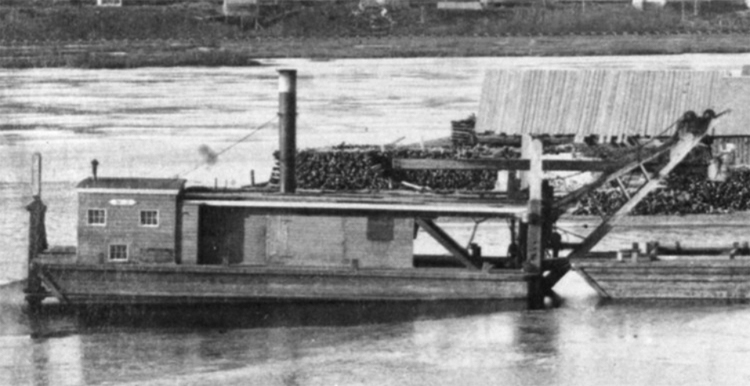April 29, 1871: The Ishpeming finishes its initial cut of the Duluth Ship Canal
On this day in Duluth in 1871, the initial digging of the Duluth Ship Canal was completed by the tug Ishpeming. On September 5, 1870, the steam-powered dredging tug took its first bite out of Minnesota Point at what was plotted as Portage Street—the path that for hundreds of years had been the Ojibwe and French fur traders Onigamiinsing or “Little Portage” that provided passage over Minnesota Point without having to paddle through what had become the Superior Entry, seven miles away. When winter cold froze the gravel, Major John Upham of W. W. Williams & Co.—the dredge’s owner—stopped digging for the season. The Ishpeming went back to work on April 24, 1871, and dug continuously during daylight hours until Saturday, April 29. The vessel had cut a swath thirty feet wide and eight feet deep to within a few feet of the lakeside beach when, according to the Minnesotian, she struck a vein of gravel frozen so hard it stopped her. Immediately a group of men went to work with “shovels and picks and drills and powder (two kegs).” They scooped, smashed, bored, and blasted through the rocklike frozen chunk of sand bar, allowing the Ishpeming to go on dredging. At 1 p.m. that day the waters of Lake Superior joined with those of Superior Bay or, as Dr. Thomas Foster wrote in the Minnesotian, “the union of the waters became forthwith an accomplished fact.” Foster’s paper reported that the waters of the Bay, a few inches higher and a few degrees warmer than the lake’s waters, cut and thawed through the dredged channel. The next morning, Sunday, April 30, a channel five feet deep and twenty wide flowed with a six-mile-an-hour current into the lake. The Ishpeming returned to work the next day, and kept cutting throughout the summer, making the canal deeper and wider. What about that story of Duluthians digging the canal by hand in two days? It’s a complete myth, and you can read about it here.

The Ishpeming, which cut the Duluth ship canal in the fall of 1870 and spring of 1871. (image: Lake Superior Maritime Collection)









